Save the Kletzsch Park Trees!
The county wants to destroy 10 majestic oak trees for a fish passage. Surely there's a better way.
Hundreds of citizens have signed petitions, written letters, and attended meetings in opposition to the proposed Milwaukee County Parks Kletzsch Park Dam Upgrade. According to the county website, “The Kletzsch Park dam project will include: A 350-foot-long, rock-filled fish passage that will let native fish move past the dam” — after they excavate and remove more than 10,000 cubic yards of the historic bluff and after a massive retaining wall is installed. This “upgrade” will place the “overlook in front of the waterfall” 70 to 100 feet back from the edge of the bluff where we now stand under the old trees to look at river and the serpentine falls. And the project includes “the removal of some trees to accommodate viewing areas and other amenities.” “Some trees” means a set of historic bur oaks, remnants of the original savanna, trees perhaps as old as the state of Wisconsin. The current site above the Kletzsch Park dam is now among the most well-loved and beautiful viewing areas in the county. We go there because of the trees and the bluff as well as the river and the dam. These ancient trees will now be replaced by “amenities.”
When my brother John and I were little kids growing up on the flat land of an Illinois grain farm, we were starved for trees. Our only trees were four crumbling box elders in the front yard. Planted by past owners for fast growing shade, they were ending their lives as we were beginning ours. So our main tree was the great white oak in our favorite book: The Tall Green House written and illustrated in the 1940s by William Neave Parker.
The book is a year in the life of a white oak in the center of an English field, and its Tenants and Visitors and Sleepers. The watercolor illustrations contain so much detail and information that we pored over it for years, never tired of visiting the oak with its magpies and green woodpeckers, moths and bees, and the tufts of plants nearby—violets and primrose and jack in the pulpit and the dried grasses with mouse tracks among them in blue snow light. The wonderful book reinforced what we somehow knew: a great tree was the center of a world.
Many years later and many years ago when my brother came to visit me in Glendale, we went off together to walk along the Milwaukee River. We stood on the bluff above the dam at Kletzsch Park under the old bur oaks grateful, both of us, that we now lived near great trees, these Wisconsin bur oaks for me and Oregon Douglas firs for John.
When we were kids Mom and Dad would pile us in the car and we’d drive to someplace where there was “scenery.” Scenery meant to us a creek or little river, a hill or two, and the enclosure of big trees. We kids defined “scenery” through the lens of our flat land deprivations: scenery was what we didn’t have on the farm. But “scenery” as we defined it turns out to be what human beings the world over long for. When you read any book on landscape or garden design, you find these same elements. People want there to be water. We want the view to not be revealed all at once. We want to walk in to the scene. And we want grand trees–for presence and history, for enclosure, for frame, for mystery. The great landscape architect Jens Jensen would appreciate the current experience at the Kletzsch Park dam. How we move from pavement to turf on the bluff. How under the arching trees we leave the sound of the street and are enclosed by the sound of the river. We are someplace else. We see the smooth water flow over the serpentine dam and the snags, the river foaming on the rocks. There is always something to see–fishermen, fish, a family of ducks, jagged ice, geese. We don’t have to stay long to be renewed. Because we have been someplace wonderful and different from the city and suburbs around us, someplace not like anywhere else around.
Wisconsin’s great citizen scientist Increase Lapham was at the site which became Kletzsch Park one day in 1850. He probably walked from his home near Third and Chestnut, up the Indian trail which became Green Bay Road to survey the rare intaglio effigies, flat-topped ceremonial mounds, Indian garden beds, fresh Indian burials. He noted several oak trees—perhaps one of ours, perhaps its parent. The trees can remind us of Lapham and of what he saw. The mounds and intaglios are gone, but the trees still link us to the past. They frame more than our present view of the river at the dam; they frame our view of history.
They frame our view of the past. Those trees fed flocks of the beautiful blue and brown passenger pigeons, extinct since 1914. The trees saw Indian women hoeing corn in their garden beds. The trees saw canoes bringing massive rolls of elm bark to cover the nearby Menomini bark lodges. They would have seen the annual return of great sturgeon. The mourning Indians burying their dead. The first white settlers and the first sawmill and the first grain mill. And the heaped bones from Indian graves the settlers piled on the railroad track.
The trees still welcome the migrating warblers and the butterflies and at their feet sometimes again the otter.
Tearing down the old oaks and the bluff to make a fish passage at Kletzsch Park because it’s the only way we can figure out to do this at the moment is a foolish and selfish act of haste and hubris. We should do what good archeologists and art restorers do: Fix only what we can smartly and safely do now without causing irreparable damage, so that later, with better information and technology, we can do it better.
We need these old oak trees more than we need pavement—even more than we, right now, need fish passage. We need these Kletzsch Park oak trees more than we need the park furniture it was suggested we make of them.
If the beautiful and well-loved Kletzsch Park dam area is replaced with retaining walls, a rubble ditch for fish passage, platforms, and pavement, pavement, pavement, we would be starved for trees. And we might recall, with regret, the words of a legendary Wisconsin conservationist:
Men still live who, in their youth, remember pigeons; trees still live who, in their youth, were shaken by a living wind. But a few decades hence only the oldest oaks will remember, and at long last only the hills will know.
—Aldo Leopold, “On a Monument to the Pigeon,” 1947
Kletzsch Park Oak Trees
If you think stories like this are important, become a member of Urban Milwaukee and help support real, independent journalism. Plus you get some cool added benefits.
More about the Kletzsch Dam Fish Passage Plan
- Op Ed: County Officials Want to Pave Paradise - Martha Bergland - Dec 18th, 2019
- Op Ed: County’s Fish Passage Plan Seems Fishy - Karl Gartung - Dec 16th, 2019
- Op Ed: Let the Fish Run Free - Milwaukee Riverkeeper - Dec 3rd, 2019
- Op Ed: Save the Kletzsch Park Trees! - Martha Bergland - Apr 19th, 2019
Read more about Kletzsch Dam Fish Passage Plan here
Op-Ed
-
Unlocking Milwaukee’s Potential Through Smart Zoning Reform
 Jul 5th, 2024 by Ariam Kesete
Jul 5th, 2024 by Ariam Kesete
-
We Energies’ Natural Gas Plans Are A Mistake
 Jun 28th, 2024 by John Imes
Jun 28th, 2024 by John Imes
-
Milwaukee Needs New Kind of School Board
 Jun 26th, 2024 by Jordan Morales
Jun 26th, 2024 by Jordan Morales

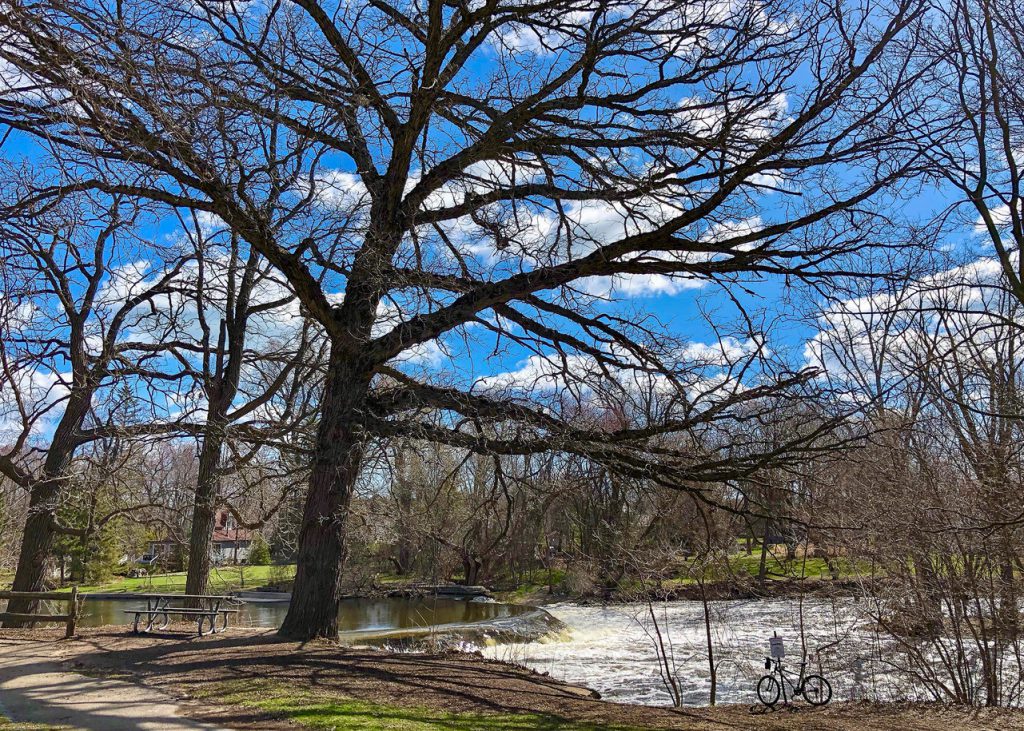
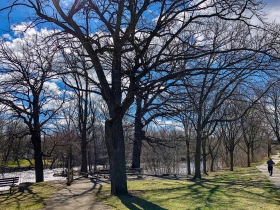
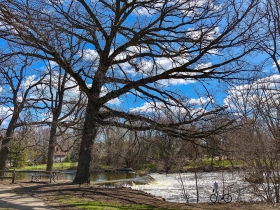
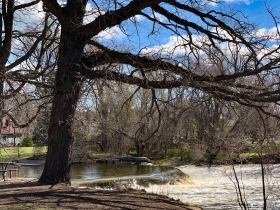
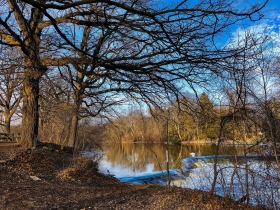
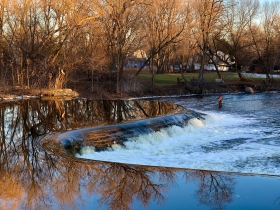



















It’s worth noting that Martha Berglund is the co-author, with former Journal environmental reporter Paul G. Hayes, of the excellent “Studying Wisconsin: The Life of Increase Lapham, early chronicler of plants, rocks, rivers, mounds and all things Wisconsin”
https://www.amazon.com/Studying-Wisconsin-Increase-Lapham-chronicler/dp/0870206486
In a nutshell, Increase Lapham played an enormous role in why and how Wisconsin came to be among America’s leading states for conservation and environmentalism. He was one of Milwaukee’s most influential early residents and the author of the first book published here.